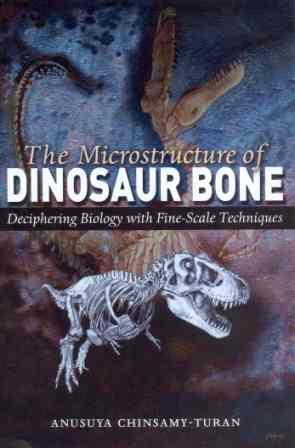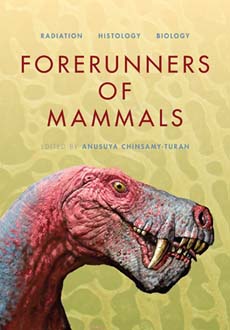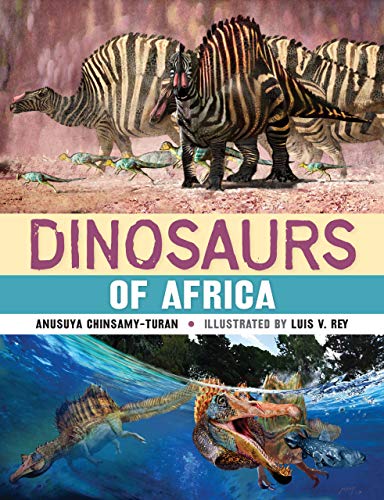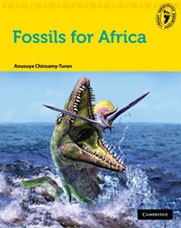Publications
Academic Books

The microstructure of dinosaur bone: deciphering biology with fine-scale techniques
For millions of years, clues to the biology of dinosaurs lie locked within the microscopic structure of their bones. Here one of the world’s leading experts on fossil bone microstructure synthesizes more than 150 years of research to expose the meaning of dinosaur bone microstructure.
In this first book dedicated to dinosaur bone microstructure, Anusuya Chinsamy-Turan begins with a general overview of living bone structure and composition and then explains how bone structure changes upon death and during fossilization. She meticulously unravels why the microscopic structure of fossil bone remains intact after millions of years of fossilization. She also provides a photographic atlas of the kinds of bone tissue found in dinosaurs and expounds on their biological significance. The final chapters offer insight into growth patterns of dinosaurs and the biology of Mesozoic birds. The book concludes with a reflective discussion on what bone microstructure can and cannot disclose about dinosaur physiology. Drawing from sources across the field of bone histology, Chinsamy-Turan paints a holistic view of the current state of the science and presents a fresh perspective on the relevance of the field to understanding the Dinosauria.

The Forerunners of Mammals: Radiation, Histology, Biology.
About 320 million years ago a group of reptiles known as the synapsids emerged and forever changed Earth’s ecological landscapes. This book discusses the origin and radiation of the synapsids from their sail-backed pelycosaur ancestor to their diverse descendants, the therapsids or mammal-like reptiles, that eventually gave rise to mammals. It further showcases the remarkable evolutionary history of the synapsids in the Karoo Basin of South Africa and the environments that existed at the time. By highlighting studies of synapsid bone microstructure, it offers a unique perspective of how such studies are utilized to reconstruct various aspects of biology, such as growth dynamics, biomechanical function, and the attainment of sexual and skeletal maturity. A series of chapters outline the radiation and phylogenetic relationships of major synapsid lineages and provide direct insight into how bone histological analyses have led to an appreciation of these enigmatic animals as once-living creatures. The penultimate chapter examines the early radiation of mammals from their nonmammalian cynodont ancestors, and the book concludes by engaging the intriguing question of when and where endothermy evolved among the therapsids.
Popular Science Books

Dinosaurs and other prehistoric life

Dinosaurs of Africa

Fossils for Africa
This book explores Africa’s incredibly rich fossil heritage and shows the importance of these fossils in unravelling the history of life on Earth. Africa is known as the cradle of humankind, but in terms of geological time, the emergence of humans is a relatively recent event. Right here in Africa we have evidence of the earliest traces of life, dating to about 3.8 billion years, when life on Earth was still single-celled and microbial. From these humble beginning Africa’s fossil record shows how life because increasingly complex and diversified into a wide array of forms.
Dedicated chapters focus on the evolution of plants, insects and the radiation of reptiles and mammals. The book concludes with the five mass extinction events that rocked Earth’s biodiversity and ponders the current crisis facing our planet’s biodiversity.

Famous Dinosaurs of Africa
Although African dinosaurs make a significant contribution to palaeontology, they are often omitted from books in favour of better-known species like T. Rex. But their fossils have been discovered across the continent - from the Sahara Desert and the dusty plains of Kenya and Tanzania to the sandstone flats of the Karoo - and they are no less magnificent or fascinating than their ‘celebrity’ cousins. Famous Dinosaurs of Africa is written for children but has broad appeal for anyone interested in learning more about dinosaurs. A brief general introduction is followed by short chapters on dinosaur species, among them those that were fish-eating, sociable, predatory, etc, as well as those that were cannibals, and the biggest meat-eating dinosaur of all time - the thread being that they all come from Africa. Details are given about where they were found, the meaning of their scientific names, and their size and diet. Spectacular, colourful illustrations bring the creatures vividly to life; photographs, maps and line drawings further illustrate the subject, while ‘Unsolved’ and ‘Up close’ panels add to the intrigue.
Articles
You can find my articles on my Google Scholar profile.
